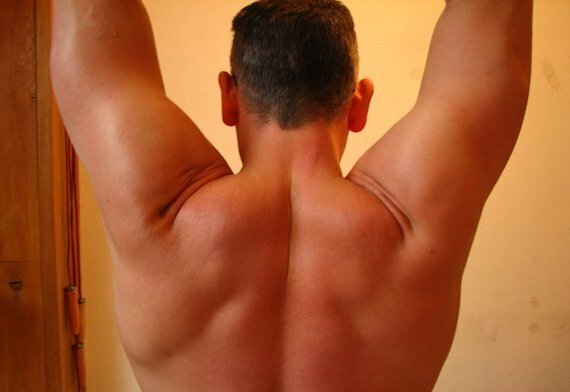Muscle Characteristics
Biology / / July 04, 2021
Muscles are tissues whose characteristic is to produce movement through the contraction and relaxation of their fibers. In addition, in some regions of the body they fulfill the function of forming walls that protect the internal organs. Being anchored in the bones covering them, they also give it a formal body. There are three types of muscles: skeletal muscle, smooth muscle, and heart muscle. Muscles are made up mainly of protein and water.
Composition, functioning and characteristics of the musculature:
Muscles are masses of tissue that are made up of contractile muscle fibers, made up of water and protein, and by insertion tissue, made up of connective tissue. Muscle fibers are grouped into bundles, that is, thin fibers that are next to each other, forming a group of fibers that work grouped in the same mechanical sense. The attachment tissue, also called the muscle spindle, is the part of the Muscle that attaches to the bones, while the contractile fibers are those that allow movement through contraction or relaxation. It is known that in the human body there are about 650 muscles in its three varieties.
Composition and characteristics of the musculature:
Name.- The word muscle is a word that was formed by mixing Latin and Greek, in which "mus" means mouse. and a small "culus" finally translating as a small mouse, since its movement is noticeable under the skin.
Fabrics.- Muscle tissue, as already said, is divided into three types. Each of these divisions has its own or distinctive qualities:
Striated or voluntary muscle. The skeletal or skeletal muscle is the type of muscle that covers most of the bones and its movements can be controlled, which is why it is called voluntary muscle. These muscles work when nerve impulses cause their fibers to contract (twitch movement), or to stop contraction and relax (muscle relaxation); however, the muscles are not normally completely relaxed, but instead maintain some tension to maintain posture (muscle tension or tone). They are made up of long fibers called myofibrils, made up of alternating rings of proteins known as actin and myosin. They are adaptable and move by the individual's will, allowing locomotion and physical movement. Their color is due to the presence of a protein called myoglobin, which gives them their characteristic red color. The muscle fibers are grouped together forming the muscles themselves, and these fibers are enveloped in a scent tissue called fascia or aponeurosis. These muscles are divided according to their shape and their muscle attachments. Long muscles are those in which their main characteristic is length; while the peniformes are wide and thin muscles that resemble a bird's feather.
Smooth or involuntary muscles. The smooth muscles or white muscles, are formed by smooth muscle fibers, their fibers are of a greater diameter and of strong contraction. These muscles do not obey the will, but are governed by the autonomic nervous system. They are found mainly in veins, arteries and in the digestive system, where they produce movements necessary for the blood circulation, as well as for digestion (peristaltic movements), allowing the passage of food along the intestine.

Cardiac muscle.- Cardiac muscle is a type of muscle that shares and features both skeletal muscle and smooth muscle. It is similar striated muscle in its structure, since they fear it is made up of fibers this day and contains myoglobin, it is very resistant to effort and fatigue. It is similar to smooth muscle yet is that a part of its fibers is thicker than skeletal muscle and its movement is not subject to the control of the will. In addition, it is a very sensitive Muscle to lack of oxygen, so some of its fibers can die in minutes if they want to be deprived of oxygenated blood through a plug.
Water.- Muscles, like most tissues in the body, are made up mainly of water, constituting up to 70% of muscle weight.
Weight.- The muscular system of the body concept and approximately 70% of the body weight and are mainly made up of accumulated fluids and proteins.
Increase.- The musculature has the ability to grow both in length and width, but not to increase its number of fibers. When repeated movements are made against resistance, the muscle fibers react by increasing their thickness, due to the accumulation of water and proteins; This increase in thickness allows you to overcome resistance; however, in no case increase their number.
Proteins.- They are the next mass in quantity, they constitute approximately 20% of the Muscle, the main ones being myoglobin, which the red color arrives, and actin and myosin, which are what allow the myofibrils to produce the movement of the fiber muscular.
Fibers.- Fibers are the individual elements that make up muscles, each one being a cell with multiple nuclei and that its entire length is made up of myofibrils, which are the contractile elements of each of these fibers. Each fiber responds to the nerve impulse by contracting or relaxing completely, without intermediate points, that is, what is called the law of all or nothing. The fibers that make up each Muscle are contained in an envelope called the fascia or aponeurosis, which is a film that surrounds the Muscle.
Activity.- Voluntary muscles are those that allow animals, including name, motor skills and movement; the involuntary muscles are those that allow the autonomic nervous system to maintain blood pressure as well as visceral movements. The heart muscle functions throughout life, as a pump that allows the exchange of oxygenated blood and venous blood; its activity is regulated by the hypothalamus in the brain, and its impulses are received in the heart by receptors called Purkinje cells. These receptors are what allow you to maintain a steady rhythm throughout your life. When these receptors fail, arrhythmias occur.
Feeding.- The nourishment of the muscles is received through the bloodstream and consists mainly of fats, sugars and proteins. These nutrients are absorbed and allow its movement. The fats and proteins provide the plastic elements for the growth of the Muscle, while the sugars constitute its main fuel. Another food for muscles are vitamins, some of which facilitate muscle work and regeneration.
Damage.- Muscles can suffer countless damages. The main ones consist of infarction, which is when the tissue is deprived of oxygen and dies; the tear that is when the aponeurosis that surrounds Muscle breaks and the rupture, which hide Muscle is subjected to excessive work or effort and the muscle fibers are broken. In some cases, overexertion or a blow can inflame muscle tissue.
Recovery.- A natural phenomenon of the body is self-recovery, which causes the muscle to secrete a series of hormones and compounds that rejoin the fractured tissues. This mainly happens when Muscle recovers after resistance exercises. When the fracture is the product of traumatic injuries, this process is more complicated and many times, despite a proper medical care, the fibers do not regenerate properly and can cause limitations in the movement of Muscle.



